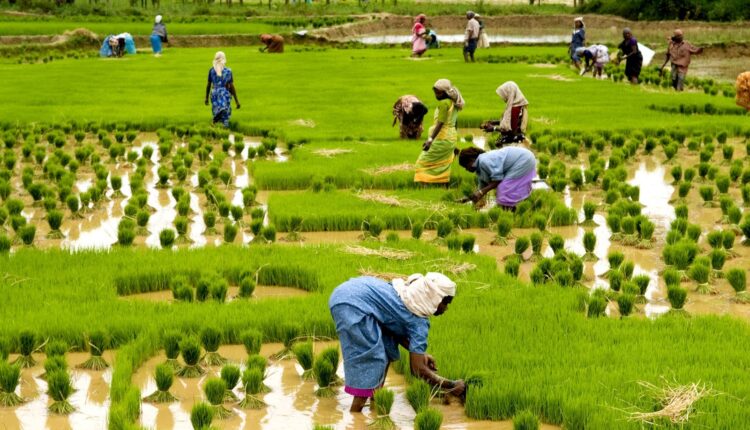How India’s rice production can adapt to climate change challenges
Climate change is likely to affect water availability in the future, and rice farmers must implement new management practices to sustain production and increase yield, Kalita says.
As the world’s population grows, the demand for food increases, while arable land shrinks. A new study from the University of Illinois investigates how rice production in India can meet future needs by adapting to changing weather conditions and water availability.
Rice main crop
“Rice is the main crop in India, China and other Southeast Asian countries. Rice consumption is also growing in the US and other parts of the world,” says Prasanta Kalita, a professor at the University of Illinois Department of Agricultural and Biological Engineering and lead author of the study.
“If you look at where they traditionally grow rice, they are countries that have a lot of water, or at least they used to. They have a tropical climate with heavy rainfall on which they depend for rice production. In total, about 4,000 liters of water per kilogram of rice goes into production and processing,” she says.
Climate change is likely to affect water availability in the future, and rice farmers must implement new management practices to sustain production and increase yield, Kalita says.
The Food and Agriculture Organization of the United Nations (FAO) estimates that the world population will grow by two billion people by 2050, and the demand for food will increase by 60%.
“We will need multiple efforts to meet that demand,” says Kalita. “And with two billion more people, we will also need more water for crop production, drinking water, and industrial use.”
Kalita and her colleagues conducted the study at the Borlaug Institute for South Asia’s research farm in Bihar, India. Farmers in the region grow rice during the monsoon season, when heavy rains sustain the crop.
Rice yield and weather conditions
The researchers collected data on rice yield and weather conditions, then used computer simulations to model future scenarios based on four global climate models. The purpose of the study was to estimate rice yield and water demand by 2050, and to assess how farmers can adapt to the effects of climate change.
“As the climate changes, it affects temperature, precipitation, and the concentration of carbon dioxide. These are essential ingredients for the growth of crops, especially for rice. It is a complicated system and the effects are difficult to assess and manage,” says Kalita.
“The results of our model show that the growth stage of the crop is shrinking. The total maturity time from the day you sow to the day you harvest is getting shorter and shorter. Crops are maturing faster and as a result not realizing the full yield potential.”
If farmers maintain current practices, rice yields will drop substantially by 2050, the study shows. But various management strategies can mitigate the effects of climate change, and the researchers provide a number of recommendations.
Soil conservation technology
Traditional rice cultivation involves flooding the fields with water. Rice transplants need about six inches of standing water. If the fields are not level, even more water is required to cover the crops, says Kalita. However, if farmers use no-till rice instead of transplants, they can increase production using significantly less water.
Another practice involves soil conservation technology. “The soil surface continuously loses water due to temperature, humidity and wind. If you keep crop residues in the soil, you reduce evaporation and conserve water. Also, when the crop residues decompose, they will help improve the quality of the soil,” explains Kalita.
The researchers also suggest implementing strategies to prevent post-harvest crop losses. The FAO estimates that about 30 percent of crops are lost or wasted after harvest, so efforts to reduce those losses can further increase crop availability and food security.
In general, the best approach to achieve a 60 percent increase in rice yield and minimize additional irrigation needs is a combination of conservation strategies and a 30 percent reduction in postharvest losses, the researchers conclude.
Contact us: If farmers want to share information or experiences related to farming with us. Then they can do this by calling us on the phone number 9599273766 or by writing an email to [email protected]. Through Kisan of India, we will convey your message to the people, because we believe that if the farmers are advanced then the country is happy.



